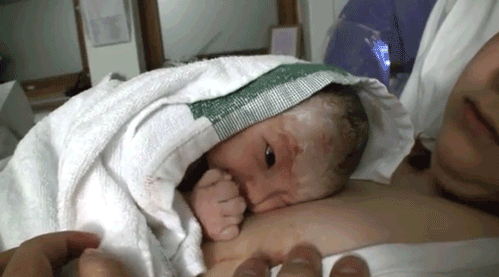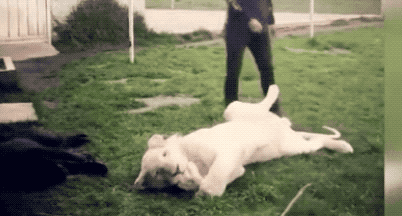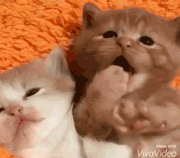Almost every baby has experienced a period of crazy hand eating.
Old people often joke: “The child has honey on his hand and is eating sweetly.”
Not long ago, my cousin, who was about to become a mother, shared her joy with me:
[When doing B-ultrasound, the doctor said the baby was eating his hands? ]
These two days, when chatting with her good friend via video, her 6-month-old daughter was also intoxicated by eating her hands.
Why are children so addicted to eating hands?
Eating hands is a natural instinct.

Babies are born with [sucking reflex] and eat from the mother’s womb. When something touches the baby’s mouth and upper jaw, they will suck automatically without being taught.
Sucking reflex is even a key indicator to judge the brain health of newborns:
When we put nipples or fingers in the mouth of a healthy baby just born, they will immediately trigger sucking reflex.

This is also why babies will eat milk when they are born.
This kind of reflex behavior is not the patent of human beings. Many mammals have the behavior of eating hands.
Little monkeys similar to humans can eat hands:

The lion cub with anti-bad adoration can also eat hands:

In order to survive as much as possible, newborns rely on this simple and basic conditioned reflex to obtain food.
Sally Goddard, director of the INPP National Institute of Neurology, pointed out in the study:
The baby’s sucking action will slowly change from reflective action to autonomous action. From involuntary sucking to controllable sucking, this is a progressive process.
When the child can eat his hands freely, please applaud the child for 30 seconds:
When the child grows up, he can eat if he wants.
Eating hands is a channel for babies to learn from the outside world.

Although the baby’s hands are yummy and saliva is very disgraceful. However, the sensory stimulation brought by eating hands provides an important [learning] channel for newborns.
Eating hands, in the eyes of adults, is a very simple action, but it is not easy for children:
There are a total of 10 fingers. Which one should I eat first?
When eating hands, how do you cooperate with your mouth and hands?
When eating hands, the baby’s hand-eye coordination is exercised, which also accelerates the functional differentiation of fingers and helps them develop more and more complicated finger movements, such as taking things, throwing things, beading and writing.
Developmental psychologist Piaget pointed out that 0-2 years old is the stage of perceptual movement. In this stage, infants need to learn through the interaction with the environment such as reflex, feeling and movement.
In other words, the baby’s congenital reflex behavior, movement, and stimulation through eating feel are the starting points of his learning behavior.
03 Eating hands is a child seeking a sense of security.

Simple hand eating can bring infinite happiness and satisfaction to babies.
By eating hands, babies can appease themselves and provide themselves with a sense of security. This is very similar to adults who like to roll themselves into small quilts to seek security.
[Eating Hands] is undoubtedly the baby’s favorite activity at this stage. When the mother cannot feed and appease the child in time, the child can satisfy himself by eating hands.
If children’s needs are not met, they may fall into a complete helplessness and affect the way children look at things in the future.
For a baby under one year old, we don’t have to worry about spoiling him at all, nor do we need to have the idea of controlling him.
If the child is prevented from eating his hands, he will experience the feeling of [losing control] and destroy his sense of security.
There is no need for excessive intervention in the hand-eating behavior of babies under the age of 1. We help the children wash their small hands and let them eat enough with confidence.
Excessive intervention in the early [hand-eating] behavior of infants may lead to prolonged hand-eating period.
04 To deal with eating hands, we should [take advantage of the situation] and [govern by doing nothing]

Generally speaking, frequent hand eating will be concentrated in 0 ~ 1 year old, and the frequency of hand eating will gradually decrease and fade after 1 year old.
If the child still has [excessive hand eating] behavior after the age of 2, we need to pay attention, such as:
- At night, he also kept eating his hands. Eating hands for a long time leads to tooth dysplasia; Finger injuries, etc.
We can take the [habit substitution] approach:
Whenever the child wants to eat his hands, we will agree with him on another alternative signal, such as pinching toys, rubbing fingers, etc.
At ordinary times, playing some hand sports games with children, such as finger exercises, can also help him relieve his hand eating behavior.
If children still eat their hands after the age of 2, parents should also find out the real reason first.
For example, when a child is in emotional anxiety, uneasiness, fear, pressure, excessive boredom, etc., it may induce his [hand-eating] behavior. Through this way, children can obtain the most primitive self-comfort.
However, for a baby before the age of 1, all hand-eating behaviors are based on instinctive needs. We just need to respond to him in time and satisfy him.
Although the little baby is dull in MengMeng, the saliva flowing from his hands is everywhere. He may be rubbing and exploring the world in the dark.
